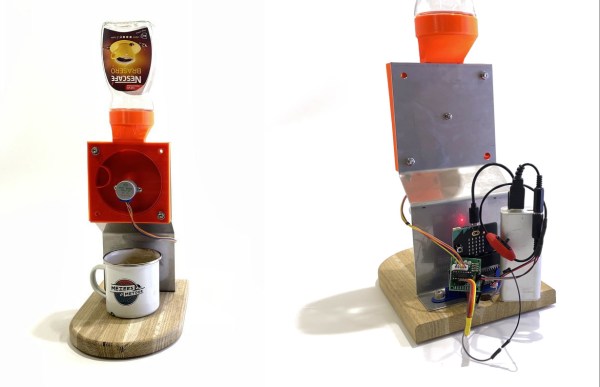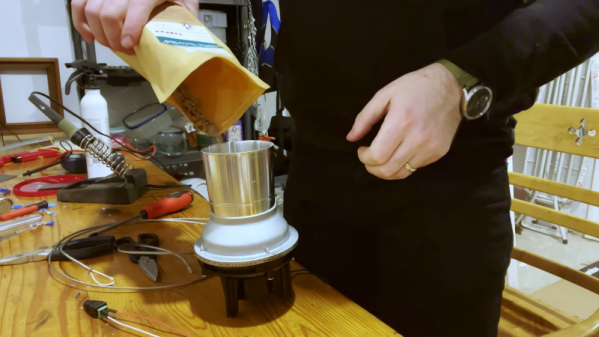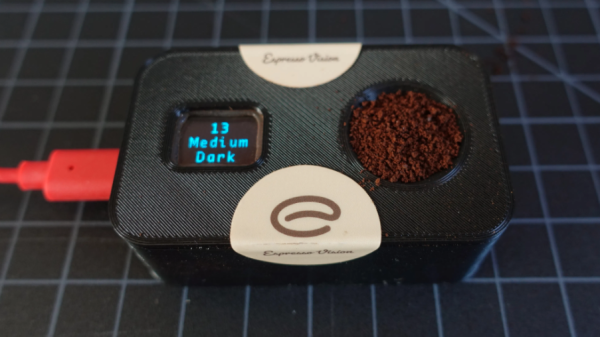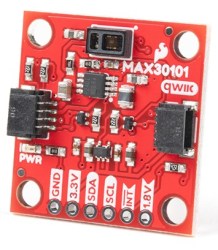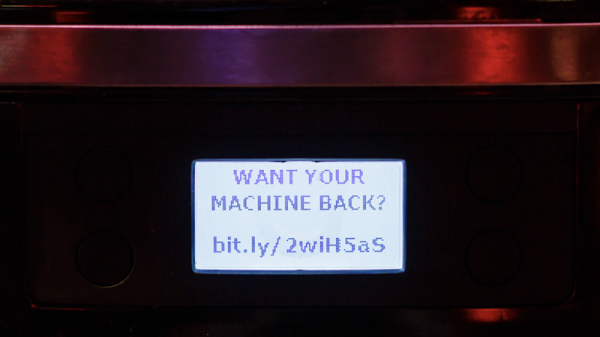Okay, so you bought a bag of heavenly-smelling single-origin beans down at the hipster coffee shop, but forgot to have them ground. What do you do? If you’re [Jimmy DiResta], there’s no way you can run down to Walmart and pick up a grinder for $15. You commune with your tools and spend a few hours building a grinder from stuff lying around in the workshop.
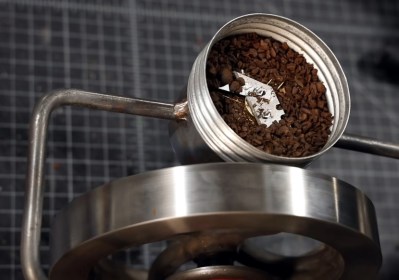 This hand-crank grinder would make a great post-apocalyptic appliance, as long as we still have a way to heat water. [Jimmy] started with an old manual abrasive disc grinder, like for grinding metal, not beans.
This hand-crank grinder would make a great post-apocalyptic appliance, as long as we still have a way to heat water. [Jimmy] started with an old manual abrasive disc grinder, like for grinding metal, not beans.
After oiling it up to run without a hitch, he pulled out a couple of conical gears and got to work mounting one to the grinder shaft and the other to the business part of a vintage industrial light fixture.
We thought for sure this was going to be a burr grinder, but were a bit disappointed to watch [Jimmy] drill holes through a utility knife blade in order to make a blade grinder. Honestly, we’re kind of surprised that he didn’t machine some burrs, but the result is impressive and lovely nonetheless.
We love that the whole thing quick-disconnects from the grinder thanks to a custom cuff that holds the light bulb just so, we just hope that [Jimmy] gave that light bulb a good cleaning first. Grab a cup of whatever and check out the build video after the break.
Not exactly your kind of shop? You could always print an emergency coffee grinder.
Continue reading “Grinding Coffee Beans The Machine Shop Way”

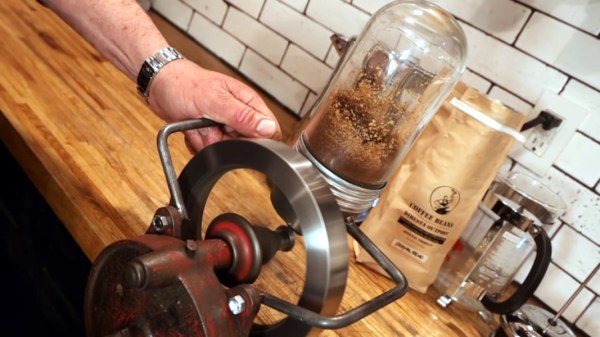
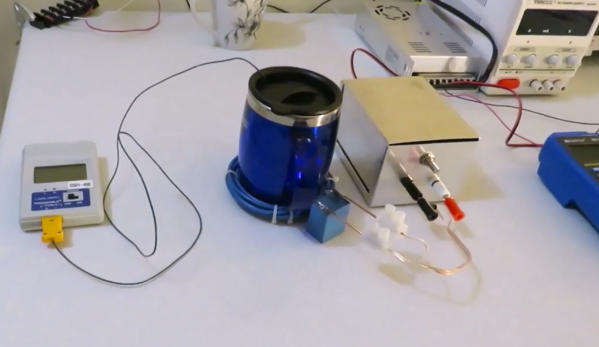
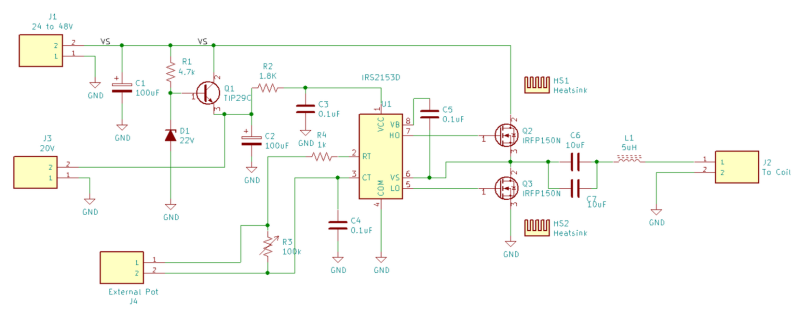

 This isn’t [Peter’s] first rodeo. In his demo video below he shows off a coffee table train he built 20 years ago using a rectangular layout under glass. This time the circular design means a spherical volume can rotate around two skateboard bearing pivot points, revealing the mountainous scene on one side and the boring old wood table on the other. But what happens to the N-scale train itself when gravity is reversed? There’s a brilliant solution to that!
This isn’t [Peter’s] first rodeo. In his demo video below he shows off a coffee table train he built 20 years ago using a rectangular layout under glass. This time the circular design means a spherical volume can rotate around two skateboard bearing pivot points, revealing the mountainous scene on one side and the boring old wood table on the other. But what happens to the N-scale train itself when gravity is reversed? There’s a brilliant solution to that!